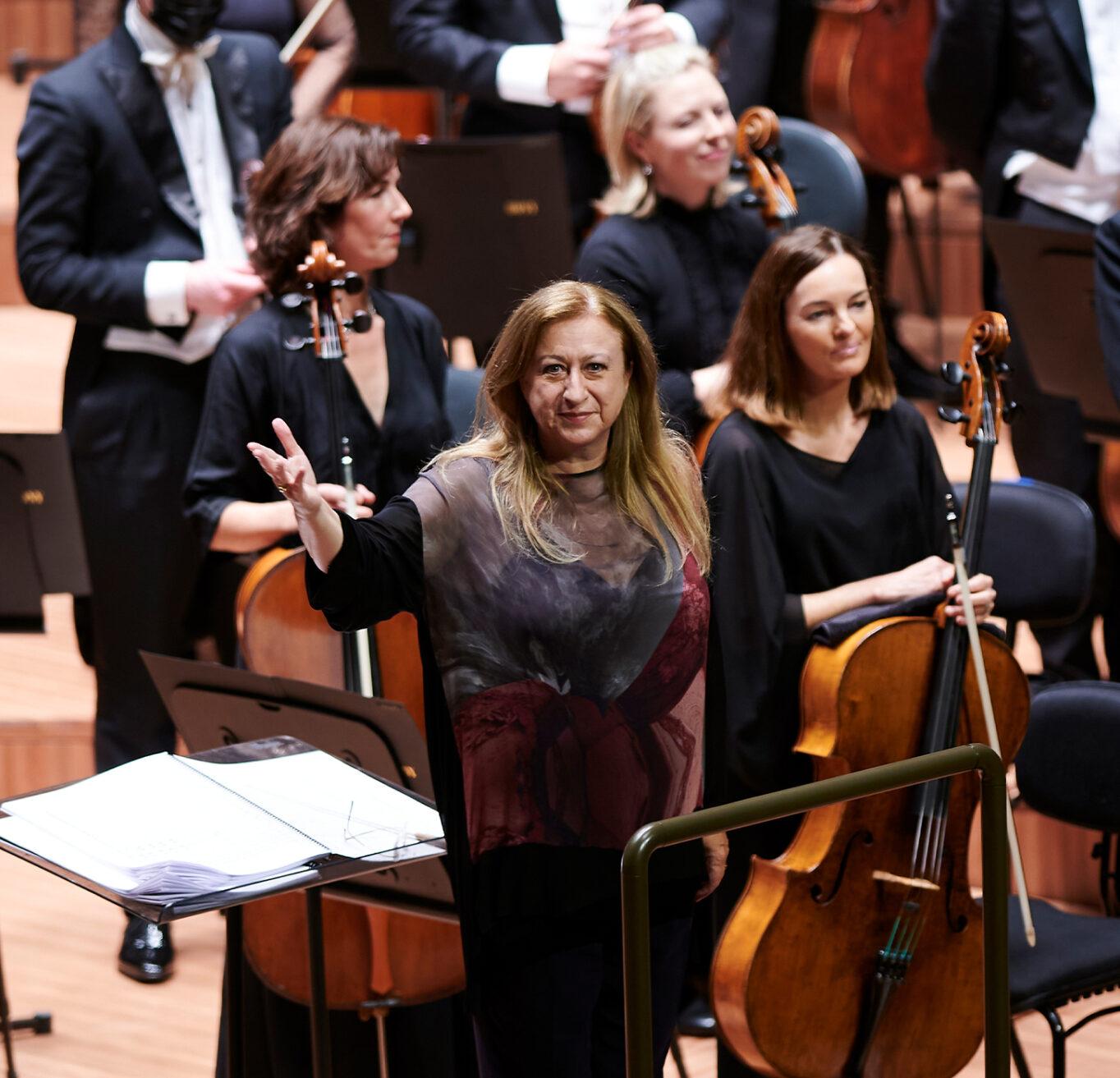The Sydney Symphony Orchestra has opened the 2024 season with a concert featuring Mahler’s Fifth and a violin concerto by a talented young French composer.
The choice of Mahler’s Fifth is fitting – the Adagietto from that symphony appeared in last year’s film Tar, and Simone Young is renowned for her interpretations of Mahler’s great works. And this was not the first time Mahler and Pepin were presented side-by-side – Young led the Orchestre National de France in a concert last year featuring Pepin’s concerto and Mahler’s first symphony, to great effect.
But first was Camille Pepin’s violin concerto, Le Sommeil a pris ton empreinte. Styled as a combination of ‘Debussyan impressionism’ and American minimalism, it began with Renaud Capuçon, centre-stage, playing sotto voce and nearer the bridge to give a guttural, almost rustic effect. The brass soon blares out and Capuçon ascends into a frenzy of fiendishly-difficult double-stopping. The rustic effect is continued with passages on the violin that feature the constancy of a droning bass. Pepin has Capuçon exploring the entire tonal potential of his instrument, rapidly alternating between shimmering tremolos and pizzicati.
But it was not only the violin that was on full display. The first movement – Les sommeil a pris ton epreinte – Et la colore de tes yeux I. – features a rapid scales on trumpets, and a particularly wonderful series of wavering passages for the celeste, which gave a dreamy effect. In the second movement – Le Temps deborde (Time overflows) – Pepin experiments with the effect of shifting metres, which suddenly shifts the emphasis on different beats and gives an added meaning to the movement’s title. The work is said to have been inspired by the poetry of Paul Eluard. All this recalls Britten’s tempestuous rendering of Rimbaud’s equally-tempestuous love poems in Les Illuminations.
After a short interval came Mahler’s Fifth. The symphony opens with the fierce momentum of that unmistakable trumpet fanfare. It quotes the Generalmarsch of the Austrian army. But we are a far cry from the postiglione that appears, for example, in Bach’s capriccio. The first movement is styled Trauermarsch (Funeral march), and despite the almost rustic dance into which the motif soon evolves, a passage marked Plötzlich schneller leidenschaftlich wild (suddenly faster, passionately wild) fittingly devolves into a riotous cacophony of strings and a strangely-chromatic brass section. The symphony was composed at a time when Mahler was confronting his own mortality. So we have a devastating expression of personal grief. As a whole, it is almost Romantic in theme – wavering between life and death, and indeed there is a noticeable trajectory, from a tragic opening, through moments of torment and anguish, and ending in a joyful realisation.
In a stark contrast to the fading flutes that closed the first movement, the second evokes a storm and begins almost in media res. It has a cinematic urgency – the tension is visceral. The only respite is a strange hymn-like passage in D major. Interestingly, the Scherzo was played at a slower tempo than most may be used to. This was not altogether a bad thing. It brought out a vague waltz-like quality that seems latent in the piece. The Adagietto was also stretched out.
But the orchestra clearly channelled its dramatic force for the performance of the riveting Rondo-Finale. In it can be seen Mahler’s forays into counterpoint, as the themes introduced in the preceding movements make themselves known again throughout the finale (which is what is so spectacular about Mozart’s Jupiter). The cantabile element that was interspersed throughout parts of the symphony comes to a head as the finale closes spectacularly with the various parts of this orchestra’s brass section pitting against each other in one final titanic contest between voices. All this was rounded off by an exhilarating race between the strings to the finish line.
